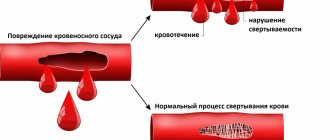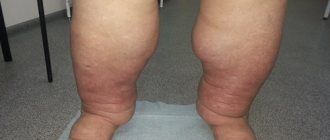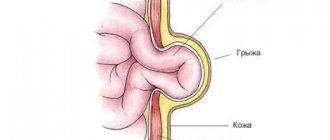Sodium bicarbonate
(lat. Natrii hydrocarbonas), other names:
sodium bicarbonate
,
tea garden
,
drinking
or
baking soda
,
sodium bicarbonate
- an inorganic compound, sodium acid salt of carbonic acid with the chemical formula NaHCO3.
In its usual form it is a finely crystalline white powder.
It is used in industry, the food industry, cooking, and medicine as a neutralizer of chemical burns of the skin and mucous membranes with concentrated acids and to reduce the acidity of gastric juice. Also used in buffer solutions.
Chemical properties
Sodium bicarbonate is an acidic sodium salt of carbonic acid. Exhibits all the properties of a salt of a strong base and a weak acid. In aqueous solutions it has a slightly alkaline reaction. Over a wide range of concentrations in an aqueous solution, the pH of the solution changes slightly, which is the basis for the use of a solution of the substance as a buffer solution.
Reaction with acids
Sodium bicarbonate reacts with acids to form a salt corresponding to the acid, for example, sodium chloride, sodium sulfate and carbonic acid, which during the reaction breaks down into carbon dioxide and water, while carbon dioxide is released from the solution in the form of bubbles:
NaHCO3 + HCl → NaCl + H2CO3 H2CO3 → H2O + CO2↑ 2NaHCO3 + H2SO4 → Na2SO4 + 2H2O + 2CO2↑
In everyday life, the reaction of “quenching soda” with acetic acid is usually used, with the formation of sodium acetate, or quenching with citric acid with the formation of sodium citrate, reaction with acetic acid:
NaHCO3 + CH3COOH → CH3COONa + H2O + CO2↑
Does baking soda dissolve in water?
There are 2 important points in dissolving sodium bicarbonate in water. If we dissolve soda at a temperature of up to 50 ° C, a salt hydrolysis reaction occurs. This is a reversible interaction of salt with water. Leads to the formation of a weak electrolyte.
And if we dissolve soda in hot water, then sodium carbonate is already formed, and in this case, the aqueous solution has a highly alkaline reaction. Hence the conclusion: the solubility of sodium bicarbonate in water is low, but with increasing temperature it also increases.
When interacting with water, sodium bicarbonate breaks down into sodium hydroxide NaOH, which imparts alkalinity to water, carbonic acid H2CO3, which, in turn, immediately breaks down into water and carbon dioxide H2O + CO2.
Chemical formula for dissolving soda in water:
NaHCO3 + H2O ↔ H2CO3 (H2O + CO2) + NaOH
An aqueous solution of baking soda has virtually no effect on plant and animal tissues.
Receipt
In industry, sodium bicarbonate is produced by the ammonia-chloride method. Carbon dioxide is passed under pressure into a concentrated solution of sodium chloride, saturated with ammonia. During the synthesis process, two reactions occur:
NH3 + CO2 + H2O → NH4HCO3 NH4HCO3 + NaCl → NaHCO3↓ + NH4Cl
Sodium bicarbonate is slightly soluble in cold water, and it is separated from the cooled solution by filtration, and from the ammonium chloride solution obtained after filtration, ammonia is again obtained, which is returned to production again:
2NH4Cl + Ca(OH)2 → 2NH3↑ + CaCl2 + 2H2O
Application
Sodium bicarbonate (bicarbonate) is used in the chemical, food, light, medical, pharmaceutical industries, non-ferrous metallurgy, and in everyday life. Registered as a food additive E500 (ii), included in the food additive E500.
In the chemical industry
Used for the production of dyes, foam plastics and other organic products, organofluorine compounds, household chemical products, fillers in fire extinguishers, a reagent for separating carbon dioxide, hydrogen sulfide from gas mixtures, for example, waste gases of fuel combustion plants. In this process, carbon dioxide is absorbed by a solution of sodium bicarbonate at elevated pressure and reduced temperature, then the absorbed carbon dioxide is released from the solution when heated and the pressure is reduced;
In light industry - in the production of rubber for shoe soles and in the production of artificial leather, leather production for tanning and neutralizing leather after acid tanning, the textile industry for finishing silk and cotton fabrics;
In the food industry - in bakery, confectionery production, preparation of carbonated drinks.
In cooking
Baking soda
The main use of baking soda in the food industry and in everyday life is cooking, where it is used mainly as a main or additional leavening agent
as part of sour and unleavened dough. When baking soda is added to sour dough, a reaction occurs with lactic acid produced during fermentation by yeast microorganisms; during this reaction, carbon dioxide is released, which causes the dough to swell.
When added to unleavened dough, carbon dioxide is released during baking due to thermal decomposition.
When using soda in its pure form, it is important to maintain the correct dosage, as it leaves sodium carbonate in the product, which gives a certain taste. The order of mixing for the dough: soda - into flour, acidic ingredients (vinegar, kefir, etc.) - into liquid.
In medicine
Traditionally, a solution of baking soda is used to disinfect teeth and gums for toothaches and mouth and throat pain, for severe coughs, sore throats, pharyngitis, and also as a common remedy for heartburn and stomach pain.
It is used for diseases accompanied by severe acidosis (diabetes, infections, etc.), to combat acidosis during surgical interventions (prescribed 3-5 g orally).
Used as an antiarrhythmic agent.
As an antacid (like all other alkalis) it is used for peptic ulcers of the stomach and duodenum, with increased acidity of gastric juice.
There is also data on the use of the drug (in the form of drips and intravenous infusions) for hypertension, symptomatic renal hypertension, and chronic renal failure. The effect is associated with an increase in the release of sodium and chlorine ions and an increase in osmotic diuresis.
In the form of suppositories it is used against motion sickness during sea and airborne illnesses
It is used as an expectorant, because... increasing alkaline blood reserves, shifts the reaction of bronchial mucus to the alkaline side, making sputum less viscous.
For rhinitis, conjunctivitis, stomatitis, laryngitis, etc. used for rinsing, washing, inhaling 0.5 - 2% sodium bicarbonate solution.
It is used intravenously to quickly eliminate metabolic acidosis during resuscitation measures and kidney diseases.
It must be borne in mind that as a result of application, the so-called acid rebound (when soda reacts with hydrochloric acid, CO2 is released, which has an irritating effect on the stomach wall, increasing the release of gastrin).
In alternative medicine, baking soda is sometimes claimed as a "cure" for cancer, however, there is no experimentally proven effectiveness of such a "treatment".
Contraindications for medical use
Individual hypersensitivity; conditions accompanied by the development of alkalosis; hypocalcemia, when taken orally, increases alkalosis and increases the risk of developing tetanic convulsions, hypochloremia - a decrease in the concentration of Cl- ions in the blood, including those caused by vomiting, or decreased absorption in the gastrointestinal tract, can lead to severe alkalosis.
It is a source of sodium, thereby increasing the volume of circulating blood, exacerbating edema and increasing blood pressure. Use at a reduced glomerular filtration rate may lead to metabolic alkalosis.
Firefighting
Sodium bicarbonate, together with ammonium carbonate, is used as a filler in dry-fill fire extinguishers and in fixed dry fire extinguishing systems. This use is due to the fact that when exposed to high temperatures in the combustion area, the substance releases carbon dioxide, the atmosphere of which makes it difficult for air oxygen to enter the combustion area.
At home
It is used as a healthy means for cleaning the surfaces of tableware and kitchen utensils, the surfaces of kitchen tables, and other surfaces in contact with food, by wiping them with a damp cloth with dry baking soda powder.
In transport
It is used to neutralize traces of electrolyte - sulfuric acid on the surface of plastic housings of lead-acid batteries with a saturated aqueous solution of baking soda.
Baking soda (sodium bicarbonate)
When professional cyclists were given 0.3g/kg bicarbonate (divided into 5 doses over 60 minutes) during a 4-minute cycling test, while the other group had already been taking bicarbonate for 3 days (0.4g/kg 3 times a day), then all participants in the experiment increased endurance and performance (by 2.2-3.1%) and increased the maximum initial speed of VO2 max (by 1.2-2%). Similar results were obtained in another cycling test (with weights; taking 300 mg/kg sodium bicarbonate increased the time to exhaustion rate from 61.5+/-2 to 75.3+/-8; 22.4%) , and in another study (500mg/kg x 5 days; 60s cycling) - 14.2%,[174] however, in contrast to these three experiments, there are many failed experiments in which bicarbonate had no effect on performance and endurance cyclists during a 2-3 minute ride at 110% VO2 max,43) a 3-minute sprint for amateur cyclists, a 90-second obstacle course, a series of short rides (60s) for women and BMX cyclists. As for long (and/or medium-duration) races, bicarbonate does not lose its effectiveness here (in healthy men; 14-second sprint followed by 16 seconds of rest; a total of 60 races within 30 minutes), increasing the endurance of athletes by 11 .5+/-5% (on average), with 4 second rides (100s pedaling and 20s rest) for a total duration of 36 minutes, bicarbonate also effectively increases the endurance of cyclists (400mg/kg in professional cyclists), the same can be said for 5 rides of 6 seconds each with 30 second breaks (5%) and doubling the duration of each ride (2%), about 5 separate 60 second rides, of which only the last used a placebo control (the distance the cyclist covers in 1 minute, increased by 42%), as well as about 10 separate 10-second runs with 50-second breaks (with isolated cases of an increase in peak power by 0.9-2%). The impressive results of the study were not confirmed in another experiment involving men with poor physical fitness who participated in 5-minute cycling races (at 70, 80 and 90% VO2 max), followed by another sprint at 100% VO2 max (endurance). ), while pre-administered sodium bicarbonate (300 mg/kg) did not have a significant effect on any of the indicators.44) During the differentiated cycling test (every 4 minutes, the cyclists made the task more difficult so that in the end they were completely exhausted, or pedaled until until the RPM drops to 60) in women who were given 200mg/kg sodium bicarbonate daily while training for 8 weeks, scientists noticed that the participants became significantly more resilient (by 164%), whereas in women who took a placebo under the guise of bicarbonate all this time, endurance increased by 123%. 45) If we talk about short-term races, then, in most cases, there is no benefit from bicarbonate. And yet, with repeated sprints (short races that are repeated many times) it helps more often than not. In a 3km ride with professional cyclists pre-given 300mg/kg sodium bicarbonate, the drug was found to shorten ride time by 1.2% (similar to 3mg/kg caffeine), while increasing cyclists' performance and endurance , on average, by 2.6%, while during the 60m race, the average performance and endurance of the participants increased by 13.7%, while the maximum value of this indicator remained virtually unchanged. Nutritionists recommend taking sodium bicarbonate during prolonged aerobic exercise (about 60 minutes) because it stimulates energy production in the later stages of exercise, thereby improving energy quality. Results from experiments involving rowers who took 300mg/kg sodium bicarbonate (or, in one test, 500mg/kg) either as a single dose 60 to 90 days before exercise or for three days prior suggest that bicarbonate, rowers' endurance increases (slightly) and, as a result, they begin to row faster (that is, if previously they spent 6 minutes 16 seconds on a 2000-meter sprint, then after taking bicarbonate - 6m 1s, that is, 1.3% faster ), which was confirmed in other experiments (time per sprint decreased by an average of 1.8%). And yet, in most cases, these experiments do not produce the expected results.46) All of them were 2000-meter sprints, except for one 2-meter endurance test. Including sodium bicarbonate in a fluid-rich diet (resulting in a person losing 4% of body weight to get into pre-workout shape) also does not produce any significant positive changes, as does longer-term (4 weeks) daily supplementation of 300 mg/day. kg bicarbonate (the effect is no different from placebo). Experiments involving professional rowers who were given sodium bicarbonate before starting a 2000m sprint were mostly ineffective, that is, bicarbonate most often does not improve endurance and performance, only in some (in their own words, that is, purely subjective).










